The Risk of Infection by African Swine Fever Virus in European Swine Through Boar Movement and Legal Trade of Pigs and Pig Meat
- PMID: 31998765
- PMCID: PMC6962172
- DOI: 10.3389/fvets.2019.00486
The Risk of Infection by African Swine Fever Virus in European Swine Through Boar Movement and Legal Trade of Pigs and Pig Meat
Abstract
African swine fever (ASF) is currently spreading westwards throughout Europe and eastwards into China, with cases occurring in both wild boar and domestic pigs. A generic risk assessment framework is used to determine the probability of first infection with ASF virus (ASFV) at a fine spatial scale across European Union Member States. The framework aims to assist risk managers across Europe with their ASF surveillance and intervention activities. Performing the risk assessment at a fine spatial scale allows for hot-spot surveillance, which can aid risk managers by directing surveillance or intervention resources at those areas or pathways deemed most at risk, and hence enables prioritization of limited resources. We use 2018 cases of ASF to estimate prevalence of the disease in both wild boar and pig populations and compute the risk of initial infection for 2019 at a 100 km2 cell resolution via three potential pathways: legal trade in live pigs, natural movement of wild boar, and legal trade in pig meat products. We consider the number of pigs, boar and amount of pig meat entering our area of interest, the prevalence of the disease in the origin country, the probability of exposure of susceptible pigs or boar in the area of interest to introduced infected pigs, boar, or meat from an infected pig, and the probability of transmission to susceptible animals. We provide maps across Europe indicating regions at highest risk of initial infection. Results indicate that the risk of ASF in 2019 was predominantly focused on those regions which already had numerous cases in 2018 (Poland, Lithuania, Hungary, Romania, and Latvia). The riskiest pathway for ASFV transmission to pigs was the movement of wild boar for Eastern European countries and legal trade of pigs for Western European countries. New infections are more likely to occur in wild boar rather than pigs, for both the pig meat and wild boar movement pathways. Our results provide an opportunity to focus surveillance activities and thus increase our ability to detect ASF introductions earlier, a necessary requirement if we are to successfully control the spread of this devastating disease for the pig industry.
Keywords: European Union (EU); disease hotspot; disease transmission; pork product; risk assessment; riskiest pathway; swine disease; wild boars.
Copyright © 2020 Taylor, Condoleo, Simons, Gale, Kelly and Snary.
Figures

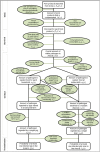
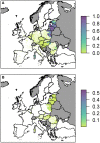
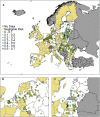


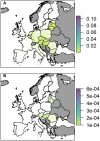
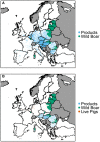

References
-
- Mebus C, House C, Gonzalvo FR, Pineda J, Tapiador J, Pire J, et al. Survival of foot-and-mouth disease, African swine fever, and hog cholera viruses in Spanish serrano cured hams and Iberian cured hams, shoulders and loins. Food Microbiol. (1993) 10:133–43. 10.1006/fmic.1993.1014 - DOI
LinkOut - more resources
Full Text Sources

